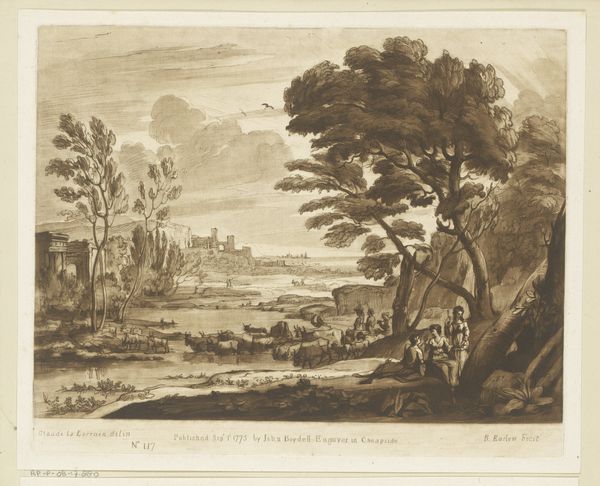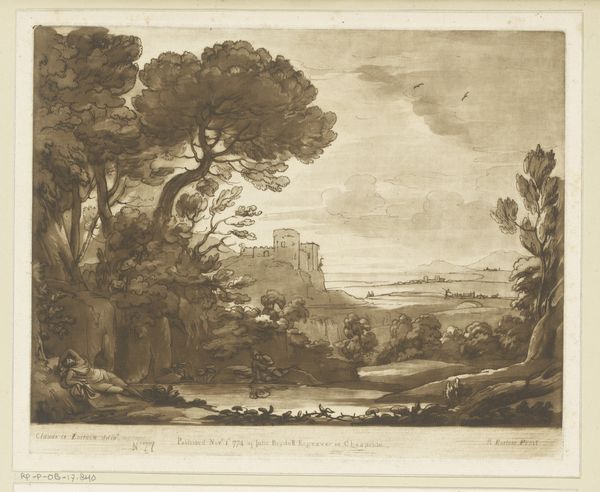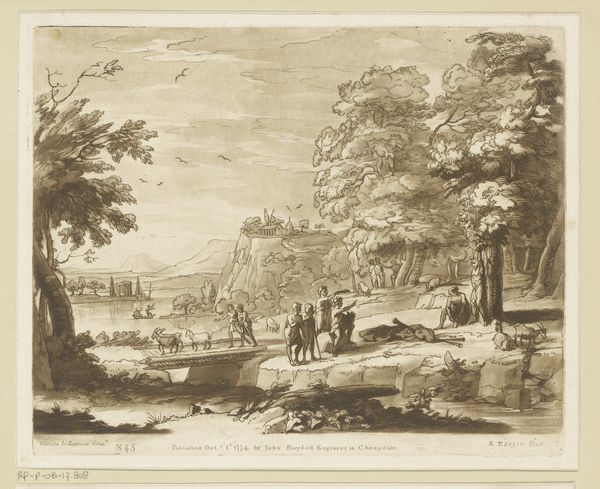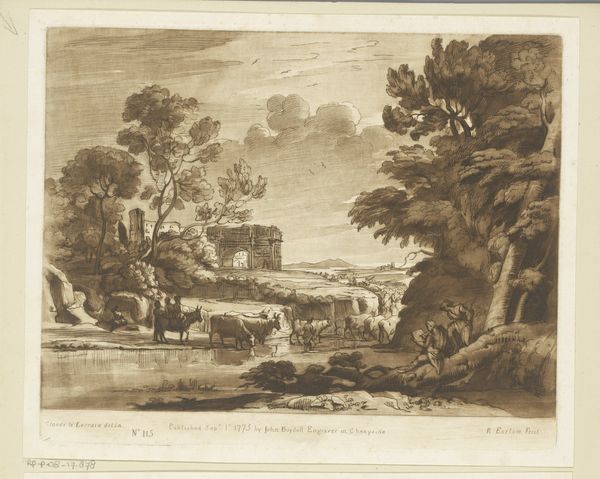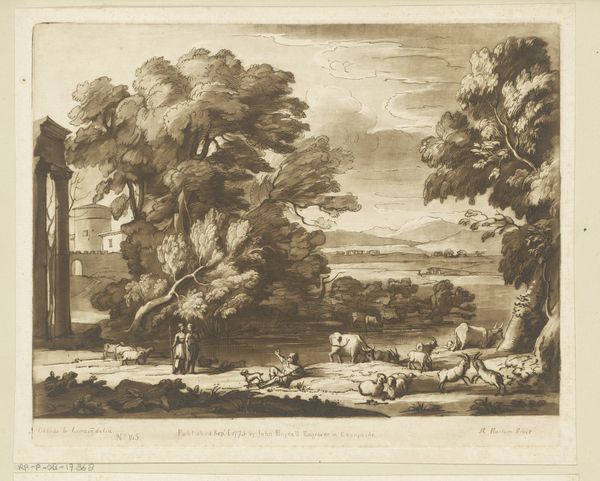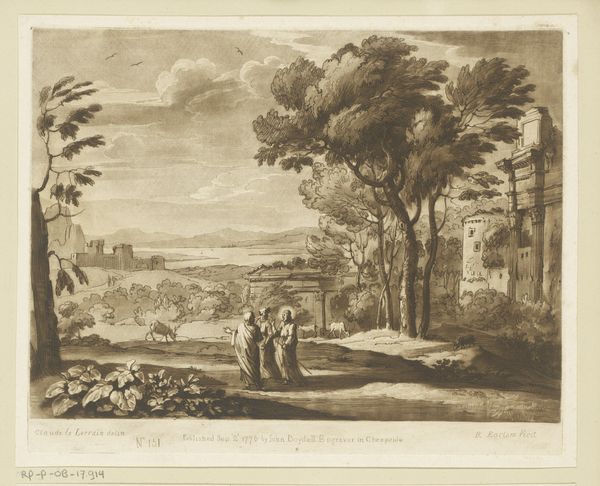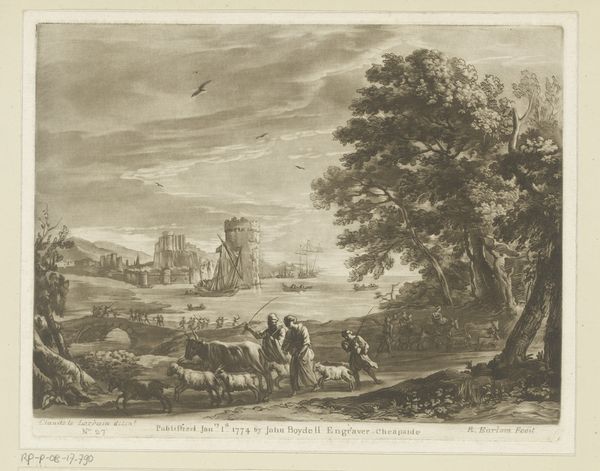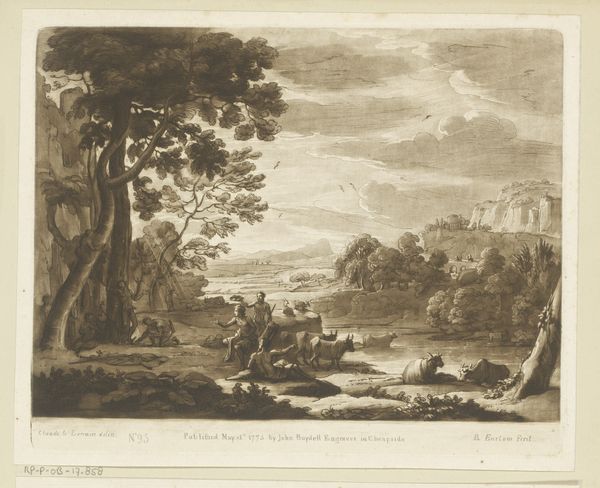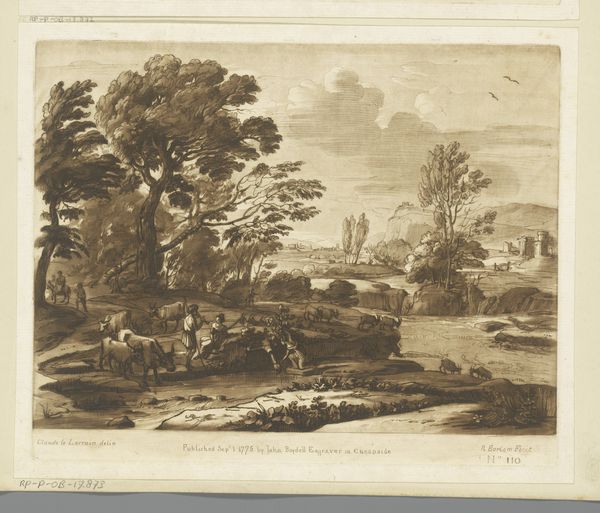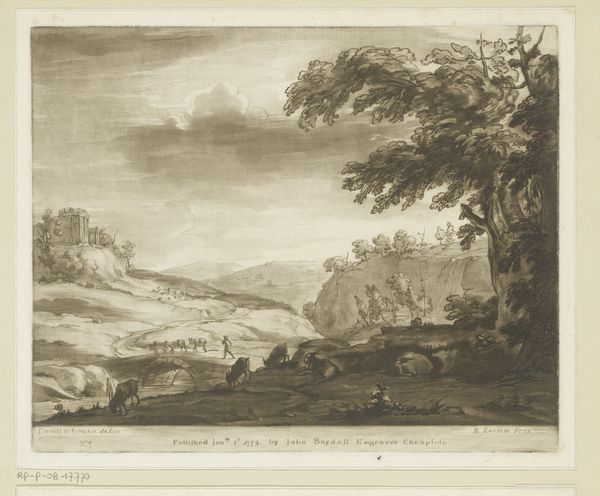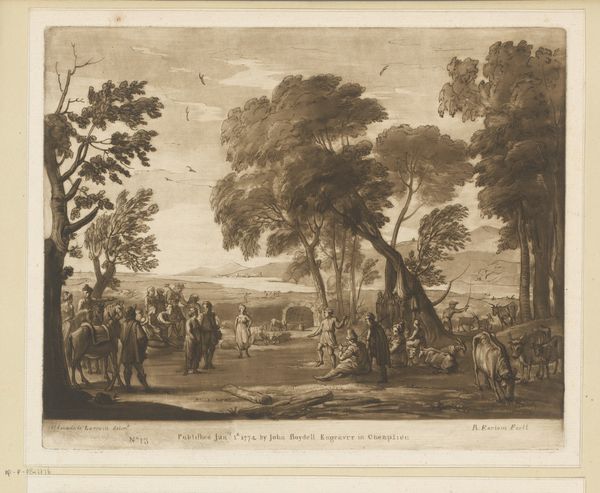
Landschap met fluitspelende herderin en vee bij een meer Possibly 1775
0:00
0:00
print, engraving
#
neoclassicism
# print
#
landscape
#
charcoal drawing
#
pencil drawing
#
engraving
Dimensions: height 207 mm, width 256 mm
Copyright: Rijks Museum: Open Domain
Editor: Here we have "Landscape with a Shepherdess Playing the Flute and Cattle by a Lake," a print, possibly from 1775, by Richard Earlom, currently at the Rijksmuseum. It feels very idyllic, very staged… almost like a theater set. What stands out to you in this piece? Curator: I'm immediately struck by how this image consciously draws upon a long lineage of pastoral imagery, stretching back to classical antiquity. Note the shepherdess: her flute isn't merely an instrument; it's a potent symbol of harmony and a Golden Age, evoking Arcadia. Editor: Arcadia? Like, "idealized countryside" Arcadia? Curator: Precisely. Consider also the inclusion of ruins, which provide a pensive layer – a visual memento mori hinting at the transience of even the grandest civilizations. Even the placid lake serves a symbolic function; in many cultures water signifies purity and the subconscious. Notice the muted tones of the engraving, which further enhance the scene's nostalgic and idealized aura. Do you see how Earlom subtly constructs an allegory through seemingly simple scenery? Editor: That makes so much sense! I was stuck on the stage-y aspect of it, but now I see the references layering on top of each other. Curator: It invites a dialogue, doesn't it? With history, with our collective memory of simpler times. Editor: Definitely given me a lot to think about, connecting with older ideals. Thanks for sharing this new way to interpret art.
Comments
No comments
Be the first to comment and join the conversation on the ultimate creative platform.
